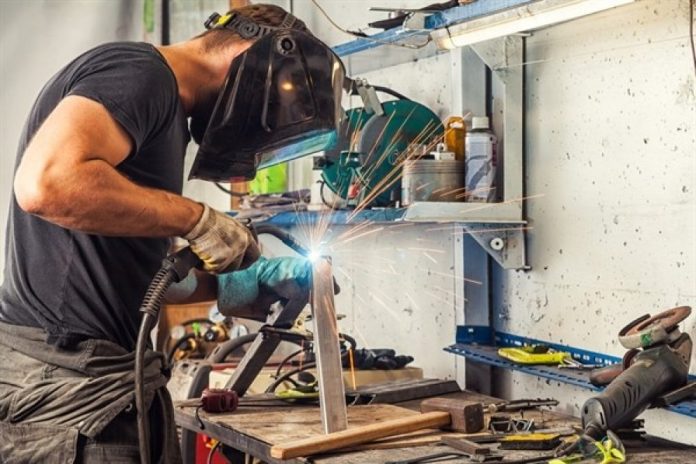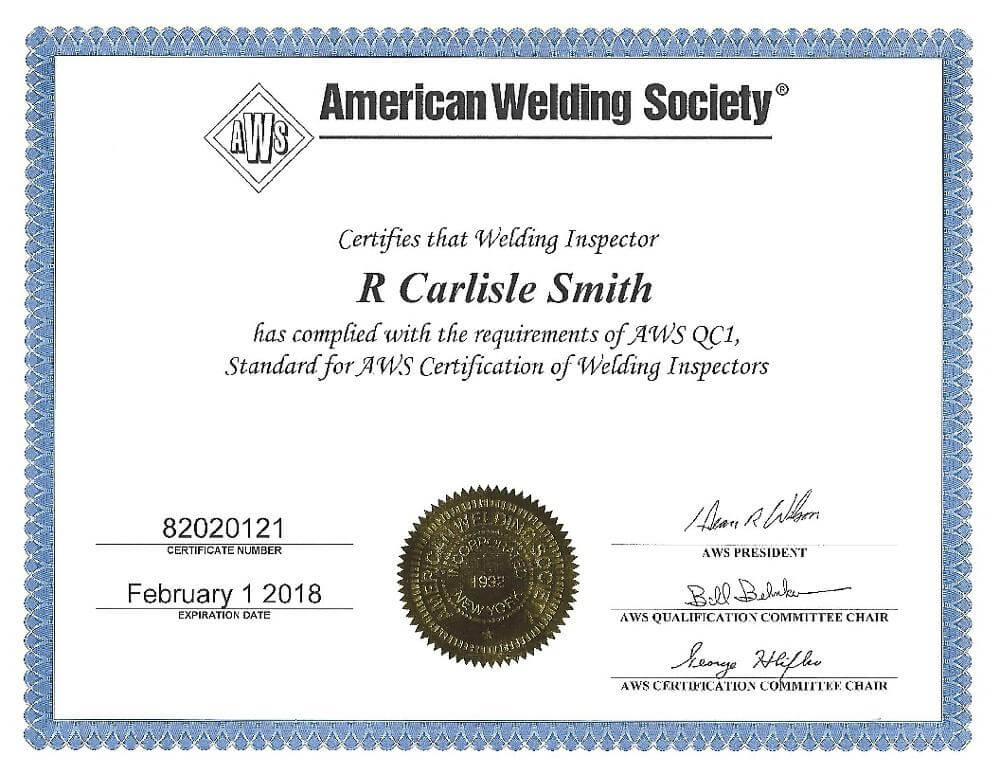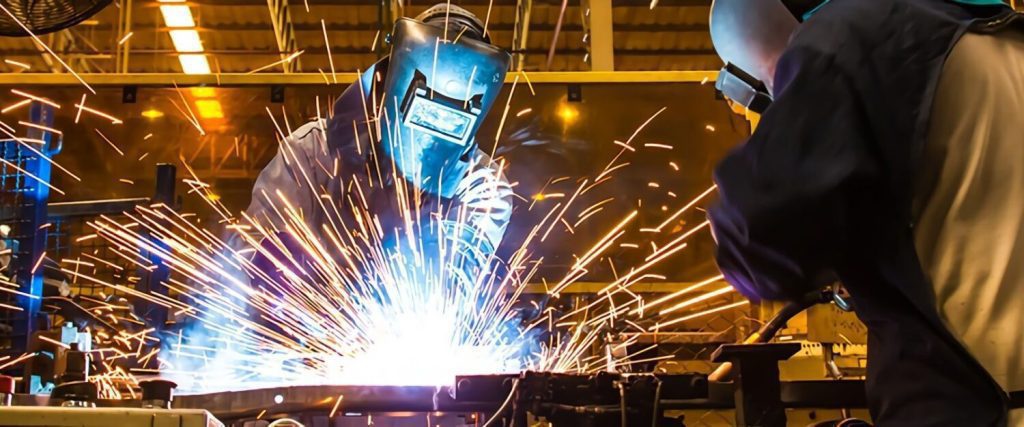Are you interested in a career in welding? Wondering how to become a certified welder? Look no further!
This article will provide all the information you need about the steps and requirements to pursue a career in welding and obtain your certification.
Whether you’re a beginner or someone already familiar with welding, this article will guide you through the process, helping you achieve your goals and turn your passion for welding into a successful profession.
1. Research the Welding Profession
1.1 Understand the Role of a Certified Welder
Before embarking on the journey to become a certified welder, it’s crucial to clearly understand the role and responsibilities that come with this profession. A certified welder is an individual who has obtained the necessary skills and knowledge to join metal pieces together using various welding techniques.
Welders are in demand across various industries, such as construction, manufacturing, shipbuilding, and automotive, to name a few. As a certified welder, you’ll create strong and durable connections, ensure structural integrity, and adhere to industry standards and safety regulations.
1.2 Explore the Different Types of Welding Processes
Welding encompasses various processes, each suited for different applications and materials. By exploring the different types of welding processes, you can gain insights into which area of welding aligns with your interests and career goals.
Standard welding processes include MIG (Metal Inert Gas) welding, TIG (Tungsten Inert Gas) welding, stick welding, and flux-cored arc welding. Each technique has its advantages and limitations, so it’s essential to research and understand the nuances of each process before making a decision.
2. Determine Your Interest and Skills in Welding
2.1 Assess Your Aptitude for Welding
Assessing your aptitude for welding is crucial in determining whether you have the natural abilities and traits that make a successful welder.
Some key traits that can contribute to your success in this field include attention to detail, manual dexterity, spatial awareness, problem-solving skills, and the ability to work well under pressure. If you possess these qualities and enjoy working with your hands, welding may be an excellent fit.
2.2 Consider Your Physical Fitness and Stamina
Welding is a physically demanding profession that requires individuals to work in various positions for extended periods. Before committing to a career in welding, it’s essential to consider your physical fitness and stamina.
Being able to handle the job’s physical demands, such as standing for long periods, maneuvering heavy equipment, and working in challenging environments, is essential. Regular exercise and a healthy lifestyle can contribute to your overall physical fitness, ensuring you can perform your duties optimally.
3. Choose a Welding Certification
3.1 Understand the Different Types of Certifications
Several recognized welding certifications are available, each aligned with specific welding processes and industry standards. The most common certifications include those offered by the American Welding Society (AWS), such as the Certified Welder (CW) certification, Certified Welding Inspector (CWI) certification, and Certified Welding Educator (CWE) certification.
Additionally, some manufacturers and industries may have their specific certifications. Researching and understanding the different types of certifications will help you determine which one best suits your career goals.
3.2 Research the Requirements and Benefits of Each Certification
Once you have identified the relevant certifications, it is essential to research their specific requirements and benefits. Some certifications may require a combination of education, training, and work experience, while others may have specific prerequisites.
Ensuring that you meet the requirements before pursuing a particular certification is crucial. Additionally, consider the benefits associated with each certification, such as increased job opportunities, higher earning potential, and professional recognition within the welding industry.
4. Obtain the Necessary Education and Training
4.1 Enroll in a Welding Program
Enrolling in a reputable welding program is recommended to gain the knowledge and skills required for welding certification. These programs are offered by trade schools, community colleges, and vocational institutions.
Look for programs with a strong curriculum encompassing theoretical knowledge, hands-on training, and practical application. A comprehensive welding program will cover material properties, welding techniques, safety protocols, blueprint reading, and welding codes and standards.
4.2 Complete Classroom and Hands-on Training
In a welding program, you’ll typically undergo a combination of classroom lectures and hands-on training. The classroom component will provide the theoretical foundation necessary to understand the science and principles behind welding.
On the other hand, hands-on training allows you to practice welding techniques under the guidance of experienced instructors. This practical experience is crucial in developing your welding skills and gaining confidence in working with different materials and equipment.
4.3 Consider Apprenticeship Programs
An apprenticeship program can supplement your classroom education with real-world, on-the-job training. Apprenticeships allow you to work under the supervision of experienced welders and apply the knowledge and skills gained in the classroom in a practical setting.
Additionally, apprenticeships often offer a structured learning experience, allowing you to navigate different stages of increasing complexity and responsibility. Consider researching apprenticeship programs in your area to explore this valuable learning opportunity.
5. Gain Practical Experience
5.1 Participate in Welding Competitions or Contests
Participating in welding competitions or contests can be an excellent way to gain practical experience and showcase your skills. These events often involve a variety of welding challenges that test your abilities in different welding techniques and scenarios.
Engaging in such competitions hones your skills and provides a platform to network with industry professionals and potentially gain recognition for your talent.
5.2 Look for Welding Internship Opportunities
Welding internships offer invaluable hands-on experience in a real-world work environment. Internships allow you to work closely with experienced welders, learn industry best practices, and develop your skills further.
Seek companies or organizations offering internships or apprenticeship opportunities and inquire about the requirements and application process. An internship can provide valuable insights into a welding career’s daily tasks and dynamics while building your professional network.
5.3 Join a Welding Club or Association
Joining a welding club or association can provide you with a supportive community of fellow welders and professionals in the industry.
These organizations often offer educational resources, networking opportunities, and access to industry events. Engaging with like-minded individuals can provide you with a platform to learn from experienced welders, ask questions, share experiences, and stay up-to-date with the latest welding technology and techniques advancements.
6. Prepare for the Certification Exam
6.1 Review Welding Standards and Codes
As you approach the certification exam, it’s crucial to review and familiarize yourself with welding standards and codes relevant to your chosen certification.
These standards and codes outline the requirements, guidelines, and quality criteria that must be met to achieve certification. Understanding and adhering to these standards will ensure your success in the Exam and equip you with the knowledge to perform welding work to industry standards once certified.
6.2 Practice Various Welding Techniques
To excel in the certification exam, extensive practice is critical. Dedicate time to practicing various welding techniques covered in your chosen certification. Set up a dedicated welding area and gather the necessary equipment and materials.
By consistently practicing techniques such as stick welding, TIG welding, or MIG welding, you’ll refine your skills and develop the level of proficiency required for the certification exam.
6.3 Take Practice Tests and Mock Exams
To assess your readiness for the certification exam, take advantage of practice tests and mock exams. These resources are designed to simulate the exam environment and test your knowledge and skills.
Practice tests can help identify areas where you may need additional study or practice, allowing you to focus your efforts accordingly. Mock exams are an excellent way to experience the time pressures and expectations of the actual Exam, helping to build confidence and familiarize yourself with the format and structure.
7. Schedule and Take the Certification Exam
7.1 Obtain Exam Information and Resources
Gather all the necessary information and resources to schedule and prepare for the certification exam. Contact the certifying body or organization to obtain the exam schedule, registration requirements, and any study materials they may provide. Be sure to fully understand the exam format, duration, and specific topics covered to tailor your preparation effectively.
7.2 Register for the Exam
Once you have the necessary information, register for the certification exam. Follow the registration process the certifying body outlines, ensuring you meet all eligibility criteria and submit any required documentation. Registering well before the exam date is important to secure your spot and allow ample time for final preparations.
7.3 Prepare the Required Documentation
Before the Exam, ensure you have all the required documentation. This may include identification documents, proof of education and training, and any other documentation specified by the certifying body. Familiarize yourself with the specific requirements and ensure everything is prepared and readily available to avoid any last-minute complications.
8. Pass the Certification Exam
8.1 Follow Exam Instructions and Guidelines
On the certification exam day, it’s crucial to remain focused and follow all exam instructions and guidelines. Pay close attention to time limits, question formats, and submission procedures. Complying with the instructions will help ensure a smooth exam experience and maximize your chances of success.
8.2 Demonstrate Proper Welding Techniques and Skills
During the practical portion of the certification exam, it’s time to demonstrate your welding techniques and skills. Implement the proper safety measures, adhere to welding standards and codes, and work diligently to create high-quality welds.
Focus on accuracy, precision, and consistency, showcasing your ability to produce welds that meet the required criteria. Remember to maintain a calm and confident demeanor throughout the examination.
8.3 Comply with Safety Regulations
Safety is of utmost importance in the welding profession. As you progress through the certification exam, prioritize safety by following proper welding procedures, using personal protective equipment, and ensuring a safe working environment.
This demonstrates your commitment to safety and protects you from potential hazards. Safety will always be a fundamental aspect of the welding profession, and your ability to prioritize it during the certification exam is crucial.
9. Apply for Certification
9.1 Submit Required Application Forms
After successfully passing the certification exam, it’s time to apply for your official certification. Follow the application process outlined by the certifying body and submit any required application forms. Pay attention to submission deadlines and ensure all forms are completed accurately and legibly.
9.2 Provide Proof of Education and Training
As part of the certification application, you’ll likely be required to prove your education and training. Gather your educational transcripts, training certificates, and any other documentation supporting your qualification for certification. Ensure that all documents are organized and readily accessible for submission.
9.3 Pay Certification Fees
Certification often incurs fees, so be prepared to pay the required certification fees as part of the application process. Familiarize yourself with the fee structure and payment methods the certifying body accepts. Timely payment will ensure the processing of your application and the receipt of your official certification.
10. Maintain and Renew Your Certification
10.1 Fulfill Continuing Education Requirements
Once you have obtained your welding certification, staying updated and continually enhancing your knowledge and skills is essential. Many certifications require ongoing continuing education to maintain your certified status.
Participate in additional training courses, attend workshops, or pursue advanced certifications to broaden your expertise and remain competitive.
10.2 Stay Updated with Industry Advancements and Changes
The welding industry constantly evolves, with new techniques, equipment, and safety practices emerging regularly.
Stay informed about industry advancements and changes by reading industry publications, joining professional welding associations, and attending trade shows or conferences. This proactive approach will ensure that you stay updated with the latest trends and technologies, enabling you to provide the best possible welding services.
10.3 Renew Your Certification Periodically
Certifications typically have expiration dates, requiring you to renew your certification periodically.
Be aware of your certification’s renewal requirements, including any continuing education or refresher courses that may be necessary. Set reminders for yourself to ensure that you fulfill the renewal requirements promptly and maintain your certified welder status.
Following these comprehensive steps, you can embark on a successful journey to become a certified welder.
Research the profession, assess your interest and skills, choose the proper certification, obtain the necessary education and training, gain practical experience, prepare for the certification exam, pass the Exam, apply for certification, and maintain your certification through ongoing learning and renewal.
With dedication, perseverance, and passion for the craft, you can build a rewarding career as a certified welder.










































